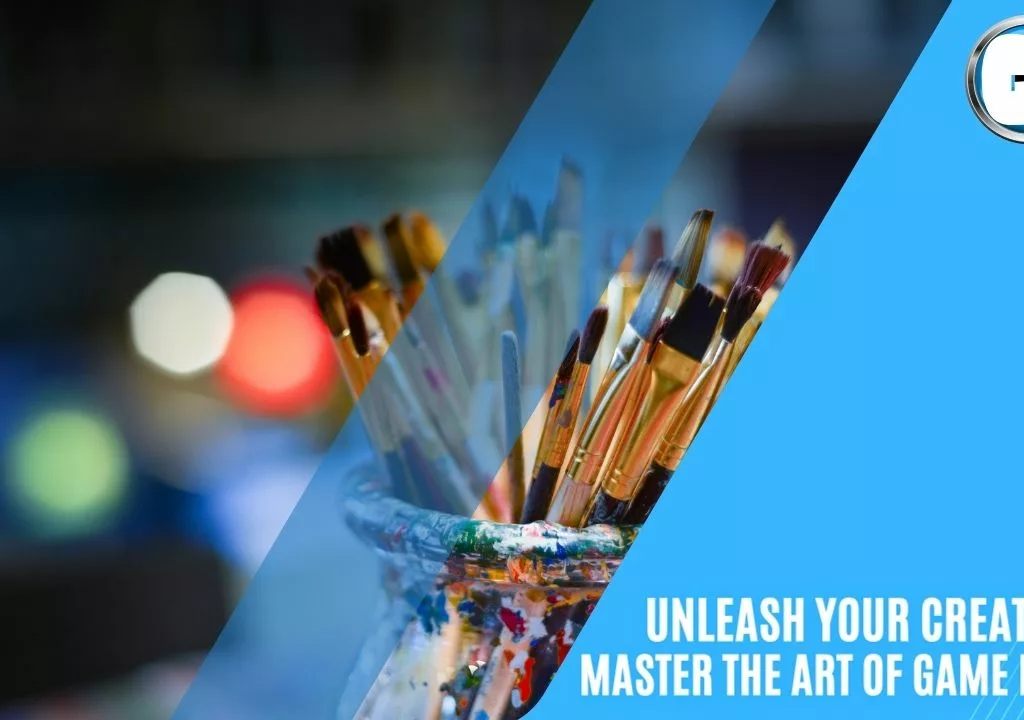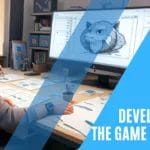Get ready to embark on a thrilling journey into the enchanting world of game design! We, as experienced game designers, are here to take you by the hand and show you how to unleash your creativity and master the art of game design.
Together, we will explore the exhilarating process of transforming your ideas into captivating games. From brainstorming to prototyping, we will guide you every step of the way, equipping you with the tools and knowledge you need to create truly immersive gaming experiences.
Let’s dive in and unlock your game design potential!
Contents:Master the Art of Game Design
Key Takeaways for game designers
- Choose a theme or concept for your game and generate specific ideas within that theme
- Develop a clear story that integrates game mechanics and provides a goal for players
- Create a playable prototype using prototyping tools like Construct or GameMaker Studio
- Gather feedback from diverse players during playtesting and iterate on the prototype based on the feedback
Brainstorming good Game Ideas and Refining Your Concept

When brainstorming game ideas, we should actively and creatively refine our concept to ensure its success. Our goal is to create a game that captivates players and keeps them coming back for more.
We start by choosing a general theme or concept that excites us and fits our target audience. From there, we generate specific ideas that align with our chosen theme. We consider every aspect of the game, from mechanics to setting, characters to story. By defining these elements, we create a solid foundation for our game.
We then move on to creating a prototype, using tools like Construct , Gdevelop 5 or GameMaker Studio to test our mechanics and gameplay ideas. Through playtesting and gathering feedback, we continuously iterate and refine our game, making changes and improvements to enhance the player experience.
With dedication and creativity, we can create a well-balanced and engaging game that stands out in the market.
Choosing the Perfect Theme for Your videogame

To create a captivating and immersive game experience, we should start by brainstorming ideas and choose the perfect theme for our game.
The theme sets the tone and overall feel of the game, providing a cohesive and engaging experience for players. When choosing a theme, we should consider what interests us and what’ll resonate with our target audience.
It could be a fantasy world filled with magical creatures, a futuristic dystopian society, or a historical setting that takes players back in time. The possibilities are endless, so we should let our imaginations run wild and explore unique and exciting themes that haven’t been done before.
Crafting Engaging Game Mechanics and Gameplay

As game designers, we strive to create a seamless and immersive experience by crafting mechanics and gameplay that both challenge and entertain players. To achieve this, we focus on three key aspects:
- Balance: We carefully balance the difficulty level of our games to ensure that players are constantly engaged and challenged. By finding the right balance between difficulty and accessibility, we create a rewarding experience that motivates players to keep playing.
- Variety: We understand the importance of keeping gameplay fresh and exciting. By introducing a variety of mechanics, power-ups, and obstacles, we ensure that players are constantly surprised and entertained. This variety also adds replay value, as players discover new strategies and approaches with each playthrough.
- Flow: We design our games with a focus on creating a sense of flow, where players feel fully immersed and in control. By providing clear objectives, responsive controls, and a smooth progression system, we ensure that players can fully engage with the game without any interruptions or frustrations.
Designing an Immersive Setting with good aesthetics for Your Game

Our game design team believes that creating an immersive setting is crucial in captivating players and enhancing their overall gaming experience. We understand that a well-designed setting not only provides a backdrop for the game, but also serves as a catalyst for players’ imagination.
To achieve this, we strive to create settings that are innovative, imaginative, and engaging. Whether it’s a fantastical world with floating islands and mythical creatures, or a gritty cityscape filled with crime and corruption, we aim to transport players into a different reality.
We pay attention to every detail, from the architecture and landscapes to the ambient sounds and lighting. By immersing players in a rich and immersive setting, we aim to make their gaming experience truly unforgettable.
Developing Memorable Characters for Your Game

We believe that incorporating unique and relatable personalities into our game is essential for developing memorable characters. To achieve this, we follow these key principles:
- Diverse Personalities: We create characters with a wide range of traits, backgrounds, and motivations. This diversity adds depth to the game world and allows players to connect with different types of characters.
- Character Arcs: Each character undergoes growth and development throughout the game. We design compelling storylines and challenges that push the characters to overcome obstacles and evolve, creating a sense of progression and investment for players.
- Player Interaction: We encourage players to engage with the characters through meaningful choices and interactions. This not only enhances the gameplay experience but also deepens the connection between players and the characters they encounter.
Weaving an Exciting Storyline for Your Game

To create an immersive gaming experience, we must intertwine an engaging storyline with captivating gameplay. A well-crafted story can transport players to new worlds, evoke powerful emotions, and keep them invested in the game from start to finish. Here is a table that showcases the elements of a compelling storyline:
| Element | Description | Example |
|---|---|---|
| Characters | Memorable and relatable | A courageous hero |
| Plot | Intriguing and unpredictable | A quest to save the world |
| Conflict | Challenging and meaningful | Overcoming personal demons |
| Theme | Thought-provoking and resonant | Love, sacrifice, redemption |
Creating a Functional Prototype for Testing

Creating a functional prototype for testing allows us to evaluate the mechanics and gameplay of our game ideas. It’s an essential step in the game design process that helps us identify strengths and weaknesses, and make necessary improvements. Here are three reasons why creating a functional prototype is crucial:
- Evaluate Mechanics: A prototype helps us test and refine the core mechanics of our game, such as movement, controls, and interactions. It allows us to see how these mechanics work together and if they provide an enjoyable gameplay experience.
- Test Gameplay Ideas: By creating a prototype, we can experiment with different gameplay ideas and see how they play out in reality. This helps us determine if our ideas are fun, engaging, and align with our vision for the game.
- Get Feedback Early: Testing a functional prototype with a diverse group of players allows us to gather valuable feedback that can shape the direction of our game. It helps us identify what works and what needs improvement, ensuring that we create a game that resonates with our target audience.
Implementing Core Features , Interactions and good interface

But let’s not get ahead of ourselves, because before we can implement the core features and interactions of our game, we need to have a clear understanding of what these features and interactions are.
This is the stage where our creativity truly shines, as we bring our game to life. We start by identifying the key elements that make our game unique and captivating. Is it a puzzle-solving mechanic that challenges players’ logic? Or perhaps it’s an immersive combat system that keeps them on the edge of their seats. Whatever it may be, we carefully design and implement these core features, ensuring they seamlessly integrate into the overall gameplay experience.
We also focus on creating engaging interactions between the player and the game world, be it through dialogue choices, environmental puzzles, or dynamic events. By implementing these core features and interactions with innovation and imagination, we create a game that captivates players and keeps them coming back for more.
Playtesting and Gathering Valuable Feedback: Balance, Usability, etc…

Gathering valuable feedback from playtesting is essential in improving our game and ensuring its success. Here are three reasons why playtesting and gathering feedback are crucial:
- Identifying Weaknesses: Playtesting allows us to identify any weaknesses or flaws in our game design. Through the feedback received from players, we can uncover areas that need improvement, such as confusing mechanics or unbalanced gameplay. This valuable information helps us refine and enhance the overall experience.
- Understanding Player Perspectives: Playtesting provides us with insights into how players perceive and interact with our game. By observing their actions, reactions, and emotions during gameplay, we can better understand their preferences, expectations, and frustrations. This understanding allows us to tailor our game to the target audience, making it more enjoyable and engaging.
- Iterative Development: Playtesting allows us to iterate and refine our game design. By continuously gathering feedback and making necessary adjustments, we can create a game that’s well-balanced, immersive, and enjoyable. This iterative process ensures that we address issues and incorporate improvements based on real player experiences.
Iterating and Refining Your Game Development for Success

To ensure the success of our game, we need to continuously iterate and refine it based on player feedback. This iterative process is crucial in creating a game that’s engaging, immersive, and enjoyable for players.
By carefully analyzing the feedback we receive, we can identify areas that need improvement and make the necessary changes to enhance the overall experience. We can adjust game mechanics, difficulty levels, and controls to ensure they’re intuitive and satisfying.
Additionally, we can add variety and excitement to the game by incorporating new features and enhancing the player’s journey. Through multiple iterations and refinements, we can create a well-balanced and captivating game that keeps players coming back for more.
Conclusion: master the art of game design
Congratulations! You have embarked on a thrilling journey to conquer the world of game design. Armed with our expert guidance and your boundless creativity, you’re now equipped to create captivating games that will mesmerize players.
So, go forth and unleash your imagination, for the art of game design awaits your innovative touch. Remember, the only limit is your own imagination, so let it run wild and master the art of game design like a true visionary.
Game on! To keep updated on the games industry and development be sure to check on my blog for more content.

Frequently Asked Questions (FAQ) Master the art of game design
Q: How Can I Monetize My Game and Make It Profitable?
To monetize our game and make it profitable, we can implement in-app purchases, offer special edition versions, and explore advertising partnerships. By strategically leveraging these avenues, we can generate revenue and ensure the financial success of our game.
Q:What Are Some Tips for Marketing and Promoting My Game to Reach a Wider Audience?
To market and promote our game to reach a wider audience, we can create a captivating trailer, engage with influencers and gaming communities, utilize social media platforms, participate in game conventions, and consider targeted advertising strategies.
Q:How Can I Ensure My Game Is Accessible and Inclusive for Players With Disabilities?
We can ensure our game is accessible and inclusive for players with disabilities by implementing features like customizable controls, subtitles, colorblind options, and alternative input methods. This will provide a more inclusive experience for all players.
Q:Are There Any Legal Considerations or Copyright Issues I Need to Be Aware of When Designing My Game?
Yes, there are legal considerations and copyright issues to be aware of when designing a game. It’s important to research and follow copyright laws, obtain necessary licenses, and protect your intellectual property.
Q:What Are Some Effective Strategies for Balancing Difficulty Levels and Ensuring the Game Is Challenging but Not Frustrating for Players?
We brainstorm ideas within a chosen theme, create a playable prototype using tools like Construct or GameMaker Studio, gather diverse feedback, iterate based on playtesting results, and balance difficulty levels for an engaging game.







